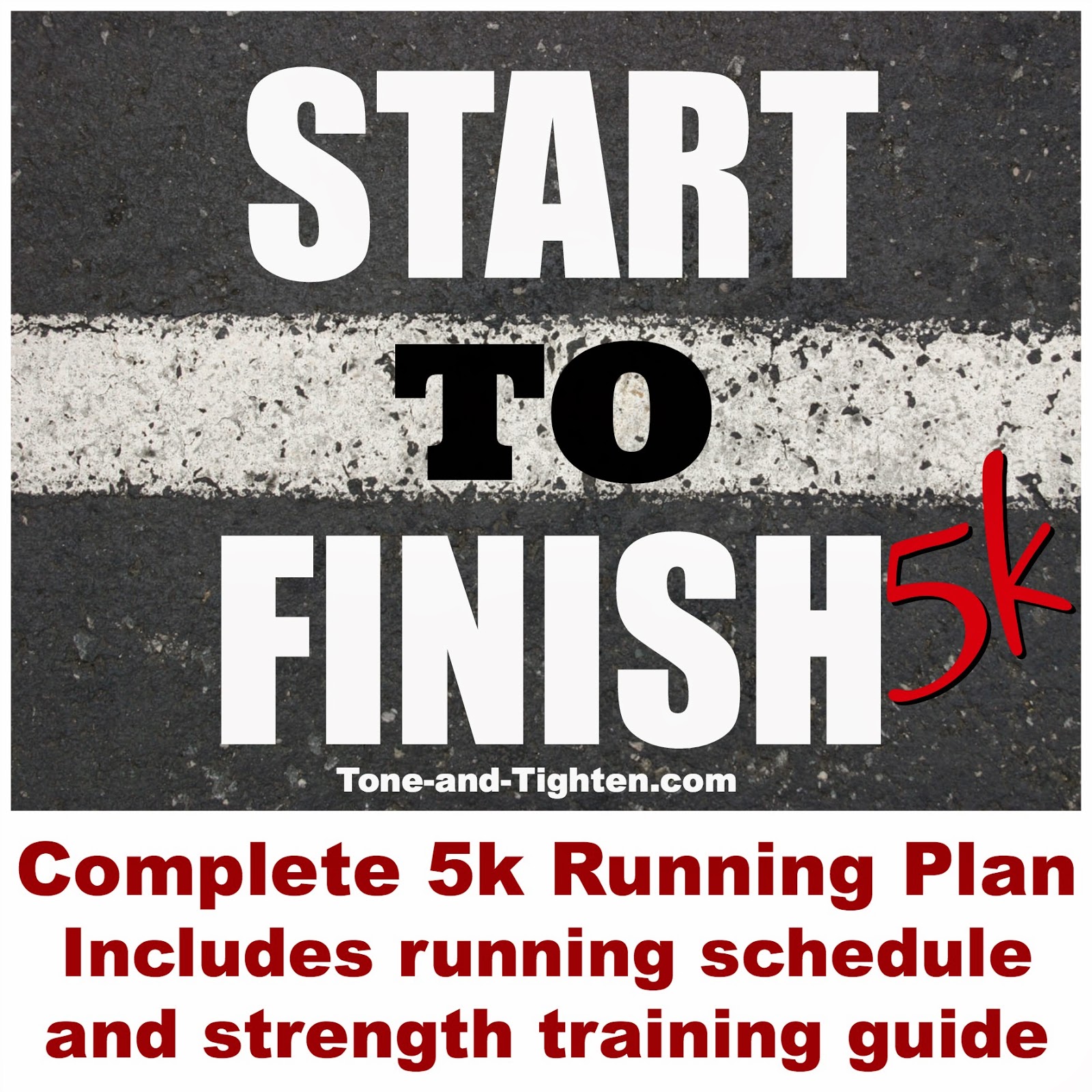Weekly highlights, new giveaways, and BONUS workouts!
Subscribe to our email list by using the box at the top of this page.
There’s something inside all runners that drives us. There’s a deep drive inside all of us that pushes us to be better – to run farther, faster, stronger. Maybe it’s pride. Maybe it’s to show off a little bit. But whatever it is – it’s there. If you’ve ever run a race before you know it’s there. If you’ve ever run a second race you know that the only thing that matters is beating the time that you posted in the first race. Many people have a strong desire to increase their speed and shave seconds off their time, but not a lot of people know how to do it safely. I often see injuries in the clinic from people who are trying to take their running to the next level but haven’t exactly done it correctly. There’s a proper way to shave time off your running and it’s the topic of today’s post here on Tone-and-Tighten.com. Today I’m sharing my “Top 8 Tips To Help You Run Faster”. Get your PR this year by following these steps to faster, injury-free running.
1. Learn How To Breathe: Ever hear of “Belly Breathing” before? Basically we’re doing to shift the demand of oxygen intake from your chest muscles to your diaphragm in order to maximize oxygen uptake and decrease accessory muscle activity. This means your body gets more air for less energy, thereby helping you to run longer and stronger. Perform “Belly Breathing” by filling your stomach with air, not your chest. As you take a deep breath in drive your belly, not your chest, outwards. This causes a contraction of your diaphragm instead of your chest muscles and thereby increases oxygen intake. Try it laying -> sitting -> standing to get it down correctly
2. Learn How To Breathe While Running: Most of us breathe on a 4-count cadence while running. This simply means that on average we inhale for 2 steps and exhale for 2 steps. This pattern of breathing actually results in us using only 50-60% of the available air we take in. What I advise people is to pay more attention to your breathing while running and try to change from a 4-count cadence to a 5-count. That means you’ll take 3 steps during inhalation and the same 2 steps while exhaling. What this will do is draw more air into your lungs and keep it there for longer; thereby helping your body to absorb more oxygen. This is vital in avoiding the “wall” that all of us have hit at one point or another. Go try it – it’s a little difficult to get down but I promise it will be well worth it!
3. Form Is Everything: Proper running form is key to maximize energy expenditure. If you’re running with poor form chances are you’re spending a lot more energy on a lot of extraneous motion. You should have your head up, looking straight ahead. Your body tall, but relaxed with your shoulder back. Your arm swing should be forward/backward and not side-to-side (a problem I encounter a lot in the female population). And finally you should land towards the middle of your foot (not on your heel) with your foot contacting the ground as close to directly underneath you as possible. Another big problem I encounter is people landing on their heel with their foot way out in front of them while running. This is essentially “putting the brakes on” during your run. If you keep your initial contact more directly under you you will be propelled forward throughout the running motion.
4. Get On Track: Tracks a great way to increase speed. Some things you need to know – one lap around the track is 400 meters or ~1/4 mile. 4 times around a standard track = 1 mile. Many schools open their tracks after school is over. Take some sort of stop watch with you and practice running faster laps. Try to make each subsequent lap faster than the one previous until you can’t do it anymore. Another great idea is to run the straights at a much faster speed than you normally would, but walk/jog the turns. This is a great way to get your body used to running at faster speeds.
5. Head For The Hills: Hill running is a great way to increase leg strength and cardiovascular endurance. Try incorporating “hill repeats” if you haven’t done it yet. Here’s how you do it: Find a fairly steep hill that’s about 100 meters long. Start at the bottom and run hard to the top of the hill. You’ll then slowly jog back down only to start running hard up the hill again. Start with 3-4 hill repeats/week; eventually you want to work up to 6-7 per week.
6. Tempo Runs: A great way to start running faster is to start running faster! Tempo runs are a great way to build speed and strength as well as your anaerobic (lactate) threshold. After a 5-10 minute warm-up, run 15-20 minutes at a “comfortably hard” pace (a little faster than you would normally run). Finish with a5-10 minute cool down. Start with 1-2 tempo runs/week and increase up to 3-4 (anything more than this may be too much and cause more injury than good).
7. Rest: Now, I know what you’re thinking: “You want me to do what??” “One of his steps in running faster is not running?” I know, right?? Crazy. But here’s the truth: running hard every day will not make you faster. Rest is critical to recovery and injury prevention. You need to take one day each week where you don’t run at all. Your body uses this time to build an repair areas that have been broken down so you actually come back stronger from your run than you would have otherwise. Trust me on this one – one day off.
8. Don’t Just Run: One of the biggest problems I see in running is that people think that’s all they need to do – run. I ask people in the clinic what they do for training while running and their answer is always the same… “I just run”. What many people don’t realize is this: you’ve gotta be strong to run!! It’s a high-impact, repetitive activity that causes a lot of breakdown if not done correctly. Strengthen key muscles in your core and legs including quads, hips, butt, back, and stomach to stay healthy and strong while running. Check out T&T’s Top 5 Exercises for Runners! Strengthening these areas is vital to helping carry you the distance and keep you on the strong track to the finish line.
Follow these 8 simple tips to help carry you longer, stronger, and on your way to your new PR this year. Get yours!
Looking for more great running advice?
Tips and advice on how to hit the ground running – literally! Video segment
Takes you from your couch to completing a 5k race in 9 weeks. FREE DOWNLOAD with strengthening program included
From my playlist to yours – songs to keep you moving until the last 1/4 mile is complete
As always- I love to hear from T&T’s readers. leave a comment below or email me at toneandtightenfitness{at}gmail.com
Make it happen,
Jared







